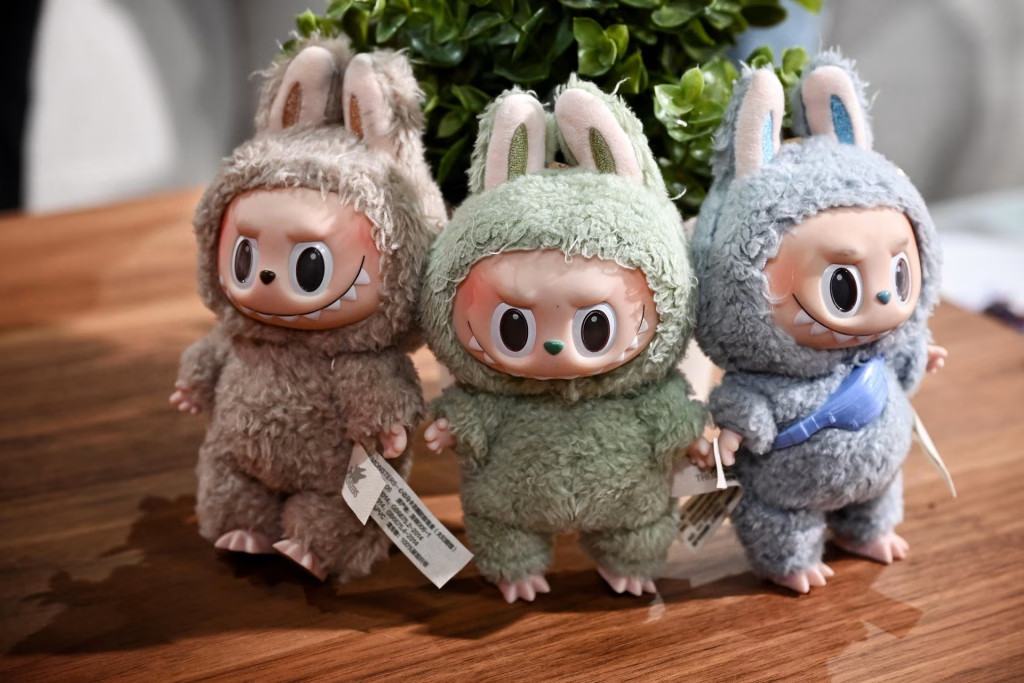What started as a collectible art toy has evolved into something far more curious. The Labubu doll, created by Hong Kong-based artist Kasing Lung and distributed by POP MART, has gained global popularity, accompanied by whispers of emotional attachment, folklore-inspired origins, and even supernatural encounters.
Is Labubu just a cute designer toy, or does it carry a deeper, possibly spiritual, presence?
Labubu’s Origin: From Fairy Tale to Folklore
Labubu is part of Kasing Lung’s The Monsters series, known for blending whimsical design with elements from Nordic mythology and fairy tales. Lung’s intention, according to art critics and toy collectors, is to evoke childlike wonder, not fear.
However, as with many myth-inspired creations, cultural context and public perception can influence how a character is received. Labubu’s slightly eerie look has fueled everything from admiration to suspicion.
Why People Feel Labubu Has a “Spirit”

Many owners have reported forming emotional or even spiritual connections with their Labubu dolls. Whether it’s placed on a desk, cuddled during sleep, or used as a calming visual companion, the doll seems to exude a presence that some describe as “watchful” or “protective.”
This kind of bond aligns with spiritual practices that suggest objects, especially those we spend time with, can carry or reflect energy.
Common experiences include:
- Feeling calmer or comforted in Labubu’s presence
- Experiencing vivid dreams when the doll is nearby
- Attributing a sense of companionship or “life” to the figure
The Paranormal Reports and Social Media Buzz
On social platforms like TikTok and X(Twitter), some users have shared eerie encounters involving their Labubu dolls:
- Dolls allegedly moving slightly overnight
- Animals reacting fearfully
- Owners feeling unexplained chills or disturbances
While these stories lack concrete proof, they add to the mystique, especially among younger buyers seeking something mysterious or unconventional.
Expert Perspective: A Christian View on Labubu
One of the more grounded critiques of the Labubu phenomenon comes from journalist Henry Williams, who examined the toy’s cultural and spiritual implications through a Christian lens.
Williams explains that while Kasing Lung’s creations are rooted in fairy tales and Nordic folklore, they are not inherently malevolent:
“Kasing Lung’s artistic creations—particularly the Labubu character and the Monsters series, are deeply rooted in Nordic mythology and folklore. They draw inspiration from fairy tales and a childlike sense of playfulness… not intended to carry negative or dark symbolism but rather to evoke a sense of wonder.”
However, he warns that fascination with “monsters,” even artistically rendered ones, may lead people, especially young believers, into spiritual gray zones.
“There have been unsubstantiated reports urging people not to buy these creations, with claims that those who did began experiencing paranormal activity in their homes… Ironically, this may fuel a surge in purchases. We live in a generation drawn to controversy.”
Williams concludes with a biblical reminder from Philippians 4:8:
“Whatever is true, whatever is noble, whatever is right, whatever is pure… think about such things.”
“On every count, the Labubu doll fails this biblical test,” he states. “As believers, our hearts and minds should be set on things that reflect God’s light, not the shadowy allure of mythological creatures.”
Aesthetic Appeal or Spiritual Symbol?

Labubu’s appeal lies in its ambiguous design—cute, but slightly creepy. This contrast is part of its charm in pop culture, especially in communities that embrace dark or alternative aesthetics. Yet this also makes it open to spiritual interpretation.
In some Eastern traditions, toys, dolls, and statues are believed to attract spirits—either protective or mischievous. While Kasing Lung likely did not intend Labubu to hold such connotations, the way people interact with the doll can turn it into a spiritual object, intentionally or not.
Consumerism, Identity, and Symbolic Ownership
Today’s obsession with Labubu is not only spiritual or aesthetic, it’s also social. Rare editions are sold for hundreds of dollars, turning the doll into a status symbol as much as a collectible. Owning one signals taste, exclusivity, and in some cases, boldness.
Some buyers admit to getting the doll not for its art, but:
- To test the supernatural rumors
- To feel part of a niche, rebellious culture
- To own a trendy, mysterious object
This blend of curiosity, controversy, and clout fuels the frenzy.
The Labubu doll may be art. It may be energy. It may be a myth in the making. Whether you see it as a whimsical creation or a potential spiritual channel depends on your beliefs and experiences.
As Henry Williams aptly puts it, in a world where spiritual boundaries are increasingly blurred, discernment is key, especially for those who strive to walk in light and not in shadow.
Discover more from LN247
Subscribe to get the latest posts sent to your email.



Comments are closed.